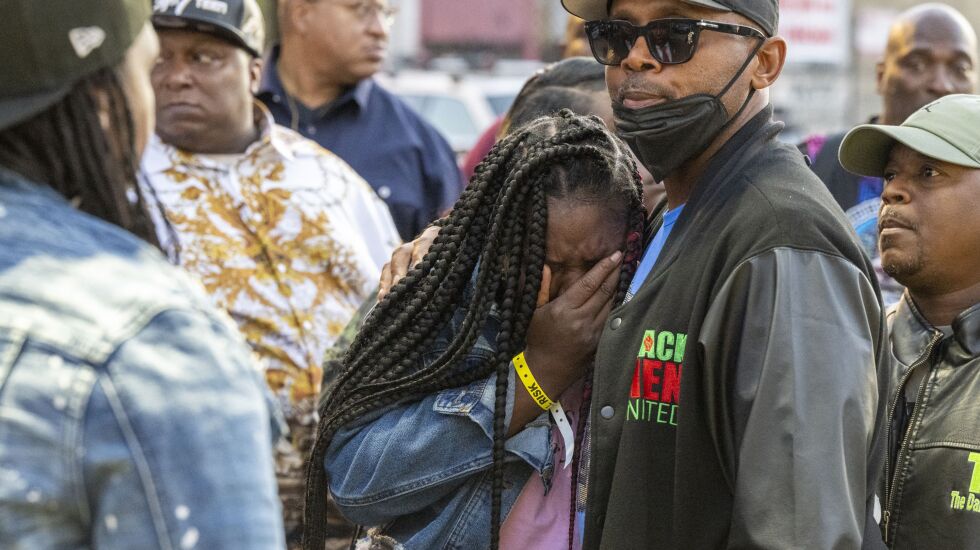
When the East African Masai people greet each other, they do not say “Hello” or “How are you?” but “How are the children?” The anticipated answer is, “All the children are well.” The welfare of children is the foremost concern of the Masai community, and “All the children are well” means that the world is right, peace has prevailed, the young and powerless are safe and the community is thriving.
But the children in Chicago are not well and safe.
On Halloween, the mass shooting of 14 people in East Garfield Park included a 3-year-old, the youngest of the injured — the same age as both of our granddaughters. Ten of the victims were members of one family, who gathered to release balloons to honor the memory of a relative.
The next morning, we attended a vigil in an empty lot at Polk Street and California Avenue, where the shootings occurred, as a statement of solidarity. We prayed for the children and their families, that their trauma and suffering might be eased. And we thought about our own grandchildren and prayed for their safety as well.
Children in Garfield Park are afraid to walk to school. To play in the park. To sit on front porches. They fear gun violence. But no neighborhood is immune. Violence is a risk to us all regardless of neighborhood. None of our children are safe, unless all are safe.
The answer is not just funding for more anti-violence programs, after-school programs, mental health programs or policing. These might help. But we must go deeper.
When we met five years ago at a West Side United meeting at Malcolm X College, it was the first time we spoke of the 13-year life expectancy gap between the Loop and Garfield Park. We agreed that the root cause of this gap was structural violence, stemming from the laws, policies, procedures, norms and values that have allowed systemic racism, neighborhood segregation, capital extraction and economic deprivation to keep neighborhoods from achieving economic vitality.
We call it a form of violence because children and adults die prematurely as a result. Not just from homicide, but from heart disease, high infant mortality, cancer and other chronic diseases and conditions.
We also agreed on the solutions: more neighborhood-based investment. Not just philanthropic support for scattered programs, but massive capital investment into projects that will lift the lives of everyone in neighborhoods like Garfield Park.
From hopelessness to hope
Since the Madison-Pulaski corridor in West Garfield Park went up in flames after the assassination of Martin Luther King Jr. over 50 years ago, there has been minimal capital investment.
The Leaders Network, New Mount Pilgrim Church, Rush Medical Center, the MAAFA Redemption Project, West Side United, the YMCA, the Institute for Non-Violence, Erie Family Health Centers and others convened in 2019 to form The Garfield Park Rite to Wellness Collaborative, to change the narrative of Garfield Park from hopelessness to hope, from violence to victory. Our neighborhood efforts commenced with the words from the Bible, “And the last shall be first.”
Our ambitious plans include the Sankofa Wellness Village in West Garfield Park. It will begin breaking ground in 2023 with a 50,000-square foot wellness center (set to open in 2025) with a health clinic, gym and exercise facility, early childhood programs, a community-owned credit union, support for small businesses, trauma-informed health care and other services.
Within a 15-minute walk along the Madison-Pulaski corridor, the Village will include the MAAFA Center for Arts and Activism; the K, a social entrepreneurial training center; and, at the site of the shuttered Aldi’s on Madison Street, a community grocer. These investments seek to treat the capital extraction and disinvestment that are among the root causes of gun violence.
We need similar investments in East Garfield Park, West Englewood, Roseland, Austin and more. We also need the full support of government, with public funding, and the city’s commercial interests to back these projects.
Our Garfield Park initiative will recreate “the spirit of village in the heart of the city,” something all neighborhoods deserve. When we center the interests of those most marginalized, when we put the last first, we all thrive.
We look forward to the day when families greet others in the Sankofa Wellness Village and across Chicago with, “And how are the children?” And hear in return, “All the children are well.”
Rev. Dr. Marshall E. Hatch Sr. is pastor of New Mount Pilgrim Missionary Baptist Church. David A. Ansell, MD, MPH, is senior vice president for community health equity for Rush University Medical Center.
The Sun-Times welcomes letters to the editor and op-eds. See our guidelines.
The views and opinions expressed by contributors are their own and do not necessarily reflect those of the Chicago Sun-Times or any of its affiliates.







